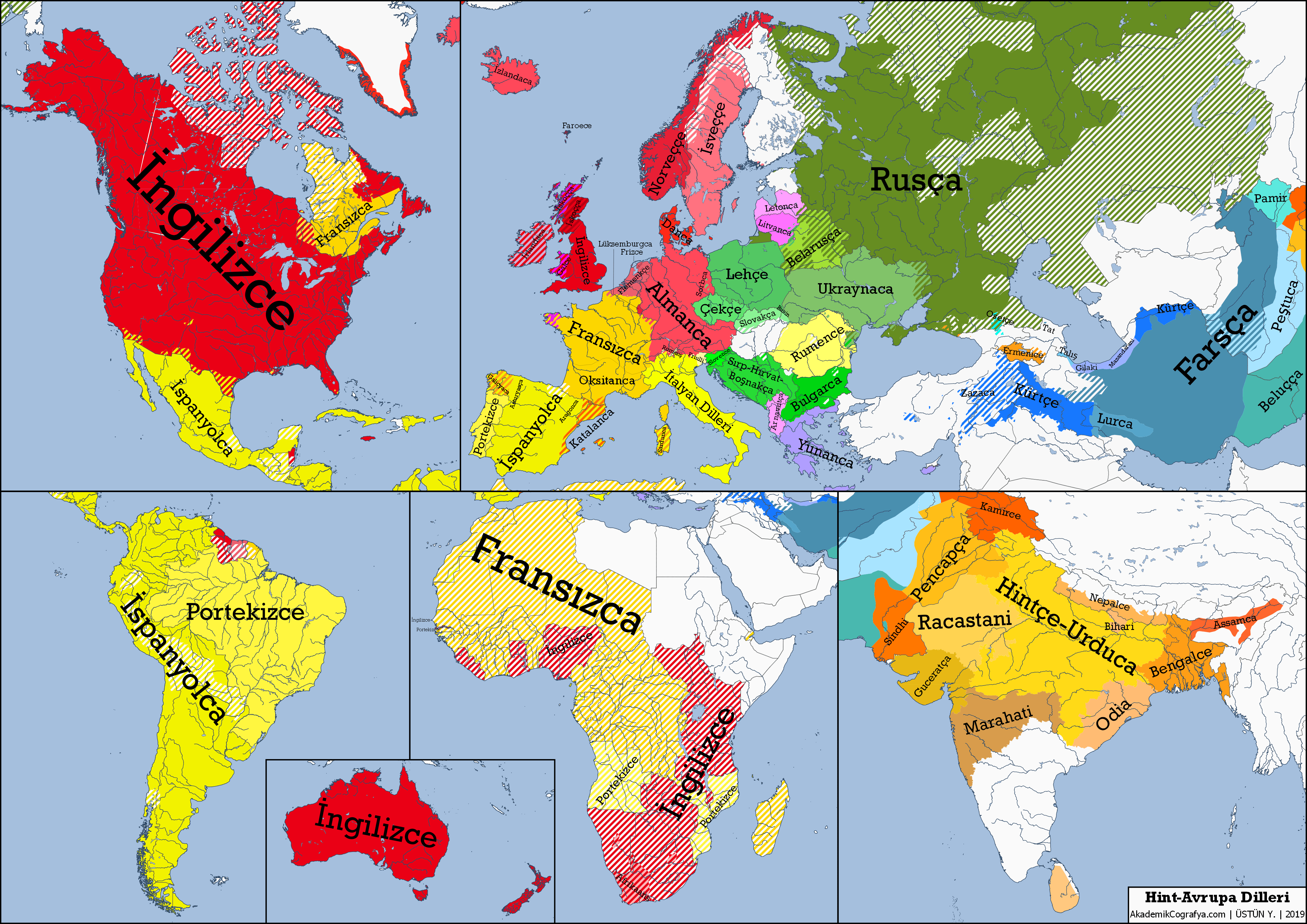
Indo-European Languages: Tracing Their Ancient Roots
Indo-European languages form the backbone of communication for over 40% of the world’s population, reflecting a rich tapestry of linguistic evolution that intrigues scholars and enthusiasts alike. Recent landmark studies have traced their roots back to the Caucasus Lower Volga region in present-day Russia, dating around 6,500 years ago to the enigmatic Yamnaya people. These ancient ancestors are credited with carrying linguistic traditions that spread across vast territories, shaping cultures and languages from Europe to South Asia. Supported by cutting-edge genetic research and ancient DNA discoveries, the journey of these languages reveals how societies transformed and migrated over millennia. Thus, the origin of Indo-European languages is not just a tale of words but a profound narrative interwoven with the human experience of migration and cultural exchange.
The Indo-European linguistic family encompasses a diverse range of languages that connect numerous cultures and civilizations across a vast geographical area. Known for their historical significance, these languages emerged from ancient peoples, particularly the nomadic tribes inhabiting the Eurasian steppe, including the influential Yamnaya group. Their migrations and interactions with local populations have led to a complex evolution of dialects and linguistic structures that continue to shape modern tongues today. By investigating ancient DNA and archaeological findings, researchers can piece together the roots and development of these languages, providing us with a clearer picture of our shared heritage. Ultimately, the study of these ancient languages offers invaluable insights into human history and cultural interconnectedness.
The Legacy of the Yamnaya People in Linguistic Evolution
The Yamnaya people, who thrived around the lower Volga region approximately 6,500 years ago, are now recognized as pivotal figures in the development of the Indo-European languages. Their agricultural practices and nomadic lifestyles facilitated the spread of languages as they migrated across vast distances from the steppes of Eurasia to various parts of Europe and Asia. This migration was marked not just by the physical movement of populations but also by the exchange of ideas and linguistic features that contributed to the evolution of languages such as Latin, Greek, and Sanskrit. Recognizing the depth of their contribution helps shed light on the intricate tapestry of language development and the social dynamics that accompanied these migrations.
Genetic analyses have revealed that the Yamnaya people had a mixed ancestry, which included interactions with indigenous populations prior to their rise. This genetic blending, combined with the Yamnaya’s innovations in agriculture and transport, rendered them influential in disseminating language and culture. The combination of mobility and genetic diversity allowed for significant cultural exchanges, shaping modern language structures and characteristics that can still be observed in languages spoken today. The legacy of the Yamnaya thus lies not just in being the bearers of a proto-Indo-European tongue, but also in their role as cultural ambassadors who bridged different groups and facilitated an early form of globalization.
Ancient DNA and the Roots of Indo-European Languages
Recent ancient DNA discoveries have transformed our understanding of the origins of Indo-European languages, providing concrete evidence that traces linguistic heritage back to the Caucasus Lower Volga region. Through two significant studies published in prestigious journals, researchers utilized DNA samples from numerous archaeological sites to create a cohesive narrative depicting the historical movements of the Caucasus Lower Volga people. This research reaffirms the steppe hypothesis, illustrating how early Indo-European speakers transformed their environments and interacted with neighboring cultures, creating a foundation for one of the world’s largest language families.
The two papers published offer insights that are critical for not only understanding the genetic makeup of modern Europeans but also reconstructing the linguistic evolution that has occurred over millennia. Notably, the integration of genetic evidence with traditional linguistic reconstruction methods has allowed researchers to posit firm connections between these ancient populations and the languages that evolved thereafter. The implications of this research extend beyond linguistics; they highlight the deep-rooted cultural exchanges that shaped the identities of communities across Europe and Asia, supporting a more nuanced understanding of our shared human history.
Tracing the Journey of Language Through Migration
The journey of the Indo-European languages began with the migration of the Yamnaya people, whose influence spread like a ripple across vast territories, from the steppes of Eurasia to as far as Ireland and Mongolia. As they moved westward, these nomadic pastoralists interacted with various indigenous groups, leading to significant cultural and linguistic exchanges. This migration not only facilitated the spread of languages but also enabled the sharing of innovations, beliefs, and technologies, which further enriched the linguistic landscape.
The implications of these migratory patterns are profound; they indicate that language is not merely a tool of communication but a reflection of the interactions, neighboring cultures, and shared histories of diverse populations. The blending of linguistics and genetics demonstrates that our understanding of language evolution must encompass the aspects of migration, cultural exchange, and social integration. With every discovery, we gain a clearer picture of how languages evolved and diversified, echoing the shared heritage of countless generations.
Unraveling the Steppe Hypothesis: The Role of Archaeological Evidence
The steppe hypothesis, which conjectures that the Yamnaya people were instrumental in the dissemination of Indo-European languages, has been significantly bolstered by archaeological evidence unearthed over decades. By studying burial sites, artifacts, and settlement patterns, researchers have correlated the movement of Yamnaya communities with the geographical distribution of Indo-European languages. The unique cultural practices of the Yamnaya, such as their kurgan burial rituals, have provided critical insights into their society and has laid the groundwork for understanding how linguistic traditions evolved alongside cultural practices.
Moreover, these archaeological finds have not only supported the steppe hypothesis but have also helped clarify the complex web of interactions that occurred amongst ancient populations. The kurgans, for instance, serve not just as tombs but as historical markers that reveal the interconnectedness of cultures. They indicate areas where languages diverged and merged, contributing to the layered evolution of Indo-European languages. This evidence is crucial for linguists and historians seeking to piece together the origins and migrations of language speakers throughout history.
Genetic Reconstruction and Linguistic Diversity
The integration of genetic reconstruction into the study of linguistic diversity has been revolutionary, showcasing a more scientifically grounded approach to understanding language origins. The research conducted by David Reich’s team highlights how genetic analysis can illuminate the historical relationships between disparate language groups. By examining the genomes of ancient populations, researchers can discern migration patterns, inter-group exchanges, and the extent of genetic mixing that facilitated the spread of Indo-European languages.
As researchers continue to unveil ancient DNA connections, we become increasingly aware of how intertwined genetics and linguistics are. This intersection not only enriches our understanding of the development of languages but also reveals the story of human migrations and interactions. The findings from the Caucasus Lower Volga studies underscore how languages evolve dynamically, influenced by the very people who speak and carry them forward across generations, creating a vibrant linguistic heritage.
Cultural Influences and Language Evolution in the Caucasus
The Caucasus region plays a crucial role in the development of the Indo-European linguistic family, serving as a melting pot of cultures and languages. The research into the Caucasus Lower Volga people highlights the importance of this area as a nexus where various groups met, exchanged ideas, and interacted culturally. Such interactions likely served as a catalyst for significant linguistic evolution, as the adoption of new words, structures, and phonetics enriched the proto-Indo-European language, eventually giving rise to the diverse languages we recognize today.
Cultural practices, such as burial traditions, also provide insight into the values and social structures of these early populations. The adoption of kurgan burials illustrates a deep connection to ancestral practices, which may have influenced the way languages were preserved and transmitted across generations. This cultural lineage is integral to understanding how languages adapt, change, and survive, demonstrating that the evolution of language is as much a product of social dynamics as it is of genetic evolution.
The Intersection of Science and Humanities in Language Research
The recent studies regarding the Indo-European languages reflect the fruitful intersection of science and the humanities, particularly in the fields of genetics, archaeology, and linguistics. This collaborative approach has given rise to a richer understanding of how historical linguistics can be informed by genetic data, allowing for a more layered perspective on language origins. The collaborative efforts of scientists and linguists exemplify how multi-disciplinary research can lead to groundbreaking discoveries that redefine our comprehension of language evolution.
By merging genetic evidence with linguistic studies, researchers can paint a more comprehensive picture of human history and the development of languages. This scientific endeavor not only uncovers the roots of Indo-European languages but also underscores the importance of collaborative research in revealing the complex narratives of our ancestry. The insight gained from such studies enhances our appreciation for the diverse paths that lead to modern languages, highlighting the interwoven nature of our cultural and linguistic heritage.
Modern Implications of Ancient Language Discoveries
Understanding the origins of the Indo-European languages has far-reaching implications for sociolinguistics, particularly in recognizing how historical migrations shape contemporary societies. As these ancient languages evolved and diversified, they laid the groundwork for legal, cultural, and social structures in civilizations across Europe and Asia. In the modern context, this evolution can influence our perspectives on migration, identity, and linguistic rights, as we recognize that language is a living entity that continues to evolve with its speakers.
Moreover, the insights gained from the research into ancient DNA and the origins of language can inform contemporary debates about multiculturalism and the complexities of language preservation. By acknowledging the shared roots of meaningful parts of our linguistic heritage, societies can foster a more inclusive understanding of cultural diversity. This recognition not only celebrates the rich tapestry of languages but also embraces the interconnectedness of humanity over millennia, revealing how deeply our stories are interwoven.
Looking Ahead: Future Directions in Linguistic Research
The exciting discoveries concerning the Indo-European languages are just the beginning of a broader investigation into human language evolution. As researchers delve deeper into ancient DNA and archaeological findings, we can anticipate even more insights that could further refine our understanding of how languages spread and diversified. Future studies may continue to uncover previously unrecognized linguistic ties, offering new frameworks to analyze language change over time.
Furthermore, as technology in genetic sequencing and data analysis advances, the potential for understanding ancient languages will expand exponentially. The application of these technologies promises to unveil more connections between genetic lineages and linguistic families globally. Such developments herald opportunities to not only clarify our ancient past but also to explore the future of language in an increasingly interconnected world, ultimately enriching our comprehension of what it means to communicate as a human race.
Frequently Asked Questions
What is the origin of Indo-European languages and how does it relate to the Yamnaya people?
The origin of Indo-European languages can be traced back to the Caucasus Lower Volga people around 6,500 years ago, who are believed to be the ancestors of the Yamnaya people. Recent studies indicate that these early speakers of Indo-European languages lived in what is today western Russia and were key in the linguistic evolution that shaped a language family spoken by over 40% of the world’s population.
How did ancient DNA discoveries contribute to our understanding of Indo-European language origins?
Ancient DNA discoveries have provided crucial evidence linking the Yamnaya people and the Caucasus Lower Volga groups to the origins of Indo-European languages. By analyzing DNA from archaeological sites, researchers have traced the genetic lineage and confirmed the demographic expansions that led to the spread of these languages throughout Europe and into the Indian subcontinent.
What role did the steppe hypothesis play in understanding Indo-European languages?
The steppe hypothesis posits that the speakers of the ancestor language of Indo-European languages originated from the Eurasian steppe. This theory was supported by linguistic reconstructions and archaeological findings. Landmark studies have reinforced the connection between the Yamnaya culture and the spread of Indo-European languages, marking a significant advancement in our understanding of linguistic evolution.
What connection exists between the Yamnaya people and the spread of modern languages?
The Yamnaya people were nomadic pastoralists who played a significant role in exporting their language and culture across Europe and into Central Asia approximately 5,000 years ago. Their superior mobility and cultural innovations facilitated the dissemination of proto-Indo-European languages, creating links that can still be traced in the languages spoken today.
In what ways did the Caucasus Lower Volga people influence the Yamnaya and Indo-European languages?
The Caucasus Lower Volga people are considered the original source of Indo-European languages, with their genetic legacy found in later groups including the Yamnaya. They contributed to the linguistic and cultural traditions that evolved over thousands of years, highlighting the interconnectedness of genetic and linguistic history in shaping modern languages.
Why are the findings about the Caucasus Lower Volga important for studying linguistic evolution?
The findings about the Caucasus Lower Volga people provide a unified genetic picture of Indo-European language origins, linking various ancient populations over millennia. This breakthrough helps scholars understand how languages evolved and spread, addressing historical puzzles about the relationships between distinct language families.
What cultural practices did the Yamnaya inherit from the Caucasus Lower Volga people?
The Yamnaya people inherited several cultural practices from the Caucasus Lower Volga people, including burial traditions involving kurgans, or burial mounds. These practices not only contributed to their cultural identity but also facilitated archaeological discoveries that shed light on their origins and the spread of Indo-European languages.
What are the implications of ancient DNA findings on the understanding of language families like Indo-European?
Ancient DNA findings imply a deep genetic and cultural mixing among populations that spoke Indo-European languages. This research indicates that the expansion of these languages was accompanied by migrations and demographic shifts, enriching our understanding of the complex interactions that shape language families throughout history.
| Key Point | Details |
|---|---|
| Indo-European Origins | The studies trace the origins of Indo-European languages to the Caucasus Lower Volga region in Russia 6,500 years ago. |
| Genetic Evidence | DNA analysis indicates that the speakers of the ancestor language were likely the Caucasus Lower Volga people, who mixed with other regional groups. |
| Cultural Impact | The Yamnaya culture, which emerged later, spread throughout Europe and parts of Asia, shaping the languages and cultures across these regions. |
| Significance of Findings | This research unifies linguistic, archaeological, and genetic evidence, providing a clearer picture of the Indo-European language family’s development. |
| Role of Research Collaboration | The studies faced challenges due to the Russia-Ukraine conflict but represent a significant collaborative achievement among scholars. |
Summary
Indo-European languages, encompassing a vast family of over 400 languages spoken by more than 40 percent of the global population, can trace their roots back to the ancient Caucasus Lower Volga people. Recent groundbreaking research identifies these early speakers as the originators of the Indo-European family, providing valuable insight into their migration patterns and cultural influences. This genetic and linguistic synthesis highlights the profound impact these languages have had on shaping modern civilizations.



